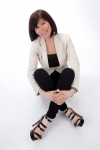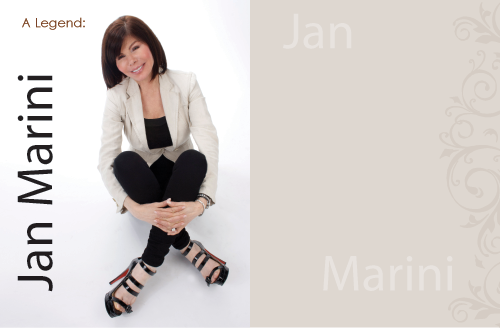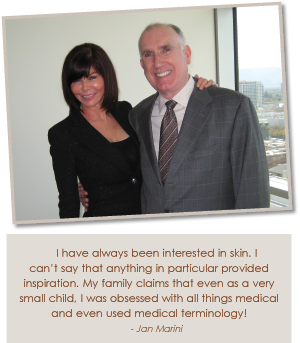Manufacturers and marketers now skew their product pitches at progressively younger consumers. Often, today’s older consumer mimics the preferences of younger trendsetters – the Hello, Kitty backpack, the Juicy pink velour hoodie-- rather than the reverse.
From this standpoint alone, it makes sense for the professional skin therapist to view the ‘tweens and teen as serious business. And, creating healthy skin habits through proper education early in life can help avert trouble later down the line. While various states impose legal restrictions upon performing treatments on minors, a “Super Skin Lounge” for ‘tweenss and teens, where minors are invited to your skin care center with their parents for a casual evening or weekend afternoon of product sampling, mingling, healthy snacking, and skin care tips, is an informative and ultimately lucrative way to introduce the iPod generation to professional skin care. Brush up on these basics as the basis for your teen and ‘tween get-together for clear, healthy skin:
STORMY WEATHER The first issue to come to mind regarding pubescent skin is acne. According to Dr. Jonathan Fielding, Los Angeles Country Director of Public Health, Acne Vulgaris or common acne affects 85 percent of teenagers in the U.S., regardless of race, ethnicity, or gender. By their mid-teens, more than 40 percent of adolescents have acne severe enough to warrant treatment by a physician.
It is the responsibility of the professional skin therapist to recognize and identify the different levels of acne, and based on this accurate diagnosis, refer the client to a trusted dermatologist. In the case of a Grade 3, severe cystic acne, this is not “throwing business away” simply because you cannot treat the client effectively; the referral in this case is acting professionally, and building your integrity. Ultimately, your colleagues will respect you for it, and your clients will thank you.
Cystic acne is unmistakable. The skin produces wave after wave of deep, angry eruptions, often concentrated in the T-zone. These eruptions cannot safely be extracted by you (and certainly not by your client), and an MD will probably prescribe a course of oral medication. In less severe cases, however, topical care can make a tremendous difference. Share these insights with your ‘tweens and teen clients:
PLASTICS are actually the source of much acneic disturbance in the skin. Here, we refer to plastics commonly found in hair products. Conditioners, hair sprays, and hair gels almost all contain plastics, which can block pores and cause breakouts. The ingredients to be aware of are PVP, CVP, and any co-polymer ingredient. Scalp breakouts and chin acne (it is very common for a person to touch their hair and to touch their chin) are good indications that hair care products are the offenders. Also, teens often go to bed with a headful of styling product in their hair, saturating the pillowcase and pressing their skin into the product all night! A simple step is to change or wash the pillowcase weekly or even more frequently, or at least turn the case inside out to minimize “marinating” the skin in transferred hair product. Incidentally, many fabric softeners also contain plastics which can produce a similar acneic response. Ditto for many waterproof, sweat-proof, or smudge-proof cosmetics and sunscreens.
PIZZA probably has nothing to do with acne. Likewise for sodas, fries, chips, chocolate, and all of the other high-fat, salty, sugary, super-processed munchies some teens call “study food.” No conclusive link has been established be’tweens diet and the skin in regard to acne. One concrete fact, however, relates to fiber. In anyone, constipation affects the function and appearance of the skin, so serve raw, high-fiber snacks at your event (crisp apple and pear slices, carrot and celery sticks, crunchy cucumber rounds to dip in salsa). While eating a large green salad each day and drinking plenty of water cannot guarantee a blemish-proof skin, adequate roughage and hydration will help the body function well on many levels.
PICKING is always bad. This is where scars come from. Tell young clients to keep their hands off their faces. If they MUST probe, advise as follows:
• Steam the skin, or take a warm shower or bath to loosen up the congested area.
• Wash the hands, and cleanse the face with a gentle product.
• Do not attack the blemish from above! Instead, wrap both index fingers in bath tissue, then gently wiggle and press up and out—not down. Pushing down can actually spread bacteria back under the skin, causing new blemishes to emerge. If the blemish is ready to exit, gentle pressure will be enough.
• If this process hurts at all, advise the client to STOP (this was, after all, your initial advice), and immediately make an appointment to see you.
• After touching a blemished area of the skin, purify with a product containing one or more of the following ingredients: Salicylic Acid, Tea Tree Oil, Witch Hazel, Balm Mint.
• It’s okay to apply an ice-cube in a clean washcloth to ease the pain of a swollen comedone.
PRODUCTS matter. It goes without saying that many cosmetics aggravate acne, for several reasons. Even oil-free make-up may contain one or more of the aforementioned plastics which trigger acneic lesions. Teach clients to read the label, and avoid products containing Lanolin, Mineral Oil, Isopropyl Myristate, artificial fragrance, artificial color, and S.D. alcohol. To give your teen/’tweens event added appeal, you might consider contacting a make-up artist and perhaps someone representing a line of cosmetics which is truly skin-friendly. Meet with these individuals prior to your event to be certain that you’re on the same wave-length regarding the importance of health-minded skin care.
And, the bottom line on make-up when it comes to teen skin is this: what really matters is taking it off! This means not sleeping in it overnight, regardless of how pristine the formula claims to be. Caution your young clients (men, too) against washing the face bar soap, especially the perfumey “deodorant” bars which leave skin acid-depleted and dry. Clients with a tendency to produce oil on the forehead and cheeks may actually seek out this dry feeling, believing that it’s the feeling of truly “clean” skin. Of course, it isn’t—use this opportunity for a brief chemistry lesson, discussing the skin’s natural acid pH and the need to avoid alkaline cleansers.
Teens and ‘Tweenss should also be cautioned against sharing make-up with friends, which spreads bacteria and can result in eye-infections and other unpleasant side-effects of adolescent chick-bonding.
Check out the new breed of make-up solvents which actually break down make-up before cleansing—even industrial-strength eyeliner and disco gloss—with superlight, non-comedogenic botanical oils. True, it sounds radical—the idea of putting oil onto a potentially volatile young skin. But, there is oil and there is oil. The fact is that “like attracts like”. Oil attracts oil to itself, and is the best way to melt away not only make-up but also accumulated sebum, which is quite abundant on the average ‘tweens and teen skin. An oil-based, precleansing product also melts away cell debris and industrial pollutants which settle on the skin, allowing cleansers to work more effectively, and keep the follicles clear of shed cells which aggravate acne.
‘Tweens and teens love scrubs—again, it gets back to that idea of creating super-clean skin. Exfoliants are important, but should never be abrasive. Clients of all ages may mistakenly think that rough handling of the skin gets it “deep”-cleaned, just as some people believe that getting their hair literally “squeaky”-clean is ideal (in fact, every “squeak” is a cry for help). During your lounge night, educate clients about the need to respect the lipid barrier, and explain that rough scrubs containing apricot pits and bits of other hard fruit-shells actually scratch and inflame the skin. Gentle exfoliants containing small, round particles like corncob meal and rice bran are far safer and more effective, especially for acneic, sensitive, or mature skin.
THE MANTRA: ‘tweens and teens are at the perfect age to be initiated into the concept of consistent cleansing, toning, and moisturizing. Again, it may surprise some parents (and even some professional skin therapists) that teen skin needs moisturizer at all. Which products you, as the professional, select for the young client are dictated by the particular activity of the skin itself; but the middle school or high school client needs the full range of homecare products to keep skin healthy.
These young clients also need to learn about a concept which will benefit their older siblings and parents as well: the double-cleanse. We know that the average American woman spends literally only a few seconds washing her face, but may spend an hour or more applying her make-up and doing her hair! The result is that our skin is actually, literally far dirtier than we may realize. The double-cleanse is self-explanatory. After dissolving make-up and oil accumulation with a precleansing product, wet skin thoroughly with warm water, and apply an appropriate liquid cleanser. Cleanse in circular motions, then rinse thoroughly with warm (never hot) water. Repeat. That second cleansing is crucial, and the thorough rinsing is essential, since even the best product in the world will irritate skin if not removed thoroughly. Instruct clients to blot skin gently with a clean towel after washing—no rubbing! Rubbing can inflame skin, and even hairdressers must teach their clients to blot and softly squeeze water from the hair, since rubbing damages these follicles as well.
Exfoliants, toners, moisturizers, and sun protection (teens still love to bask, and it is your responsibility to teach them not to) must all be prescribed by the skin therapist. Teach your young clients not to get too loyal or “hooked” to a specific item in their preferred brand. This is because the product recommendations need to change as the specific condition of the skin changes. And the years between 10 and 20 are filled with changes—seemingly every day!
In a sense, I’ve saved the most important point for very last: the skin examination. Every treatment must be preceded by a thorough visual (under magnification) and tactile examination of every inch of the client’s face, from hairline to bra-line, inside the ear, behind the ear included. Don’t wear gloves—you are feeling for the subtlest nuances of temperature, texture, oiliness, dryness, tension, grittiness, etc. Make good notes, and create a complete client file. Refer to these notes the next time the client comes in, and track trends and changes as the basis for your treatment and product recommendations.
By showing even the youngest client’s skin the respect it truly deserves, you are doing two important things: building a foundation for a loyal grown-up client relationship, and preparing every client for a lifetime of informed self-care and healthy, radiant skin!
Annet King, Director of Training and Development for The International Dermal Institute (IDI), is both CIDESCO and CIBTAC certified with more than 18 years of skin care industry experience. Her responsibilities include overseeing the vast IDI teaching staff around the globe, as well as developing the curriculum taught in all 45 countries. Her dynamic personality paired with her expertise make her one of the most in-demand guest speakers at educational events worldwide.






 Those who know Jan Marini refer to her as a visionary. While Jan might agree in principle, she sees this characterization as both a strength and a weakness. She envies those who are able to savor the moment. Where others view life in snapshots that capture real time, Jan sees broad borderless landscapes and endless possibilities. She does not see a product, she sees a business and in that same instance her mind is flooded with the business plan and all the accompanying details. Even when she is not envisioning empires, she is never satisfied with the status quo.
Those who know Jan Marini refer to her as a visionary. While Jan might agree in principle, she sees this characterization as both a strength and a weakness. She envies those who are able to savor the moment. Where others view life in snapshots that capture real time, Jan sees broad borderless landscapes and endless possibilities. She does not see a product, she sees a business and in that same instance her mind is flooded with the business plan and all the accompanying details. Even when she is not envisioning empires, she is never satisfied with the status quo.